
Curriculum guidelines for undergraduate degree programs in Computer Science.
- Subject:
- Applied Science
- Computer Science
- Material Type:
- Primary Source
- Author:
- IEEE
- ACM
- Date Added:
- 02/07/2023

Curriculum guidelines for undergraduate degree programs in Computer Science.
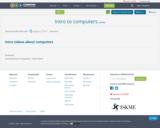
Introduction to Computers - brief videos
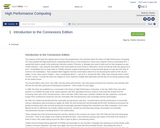
The purpose of this book is to teach new programmers and scientists about the basics of High Performance Computing. Too many parallel and high performance computing books focus on the architecture, theory and computer science surrounding HPC. This book speaks to the practicing chemistry student, physicist, or biologist who need to write and run their programs as part of their research.
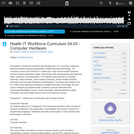
This unit provides a foundation on how a computer functions and how data is represented in memory, input and output devices, and the CPU, including its role in system functionality.

The focus of the course is on medical science and practice in the age of automation and the genome, both present and future.
It ncludes an analysis of the computational needs of clinical medicine, a review systems and approaches that have been used to support those needs, and an examination of new technologies.
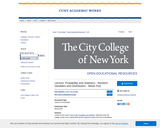
Lecture for the course "CS 217 – Probability and Statistics for Computer Science" delivered at the City College of New York in Spring 2019 by Evan Agovino as part of the Tech-in-Residence Corps program.
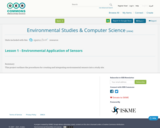
This project outlines the procedures for creating and integrating environmental sensors into a study site.
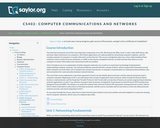
Detailed introduction to the basic hardware and software, architectural components for computer communications in local area networks. The components that are focused upon include understanding the basics of computer networks, switching, routing, protocols and security.
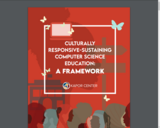
The framework was developed by the Kapor Center to bring a focus to equity in Computer Science Education, specifically around teacher preparation, professional development, curriculum development, and policy-making.

This lesson centers around the How AI Works: Computer Vision video from the How AI Works video series. Watch this video first before exploring the lesson plan.
Students learn how computer vision works. They first look at optical illusions to identify the features of the drawing that their eyes noticed. Students watch a video explaining computer vision and how a computer "sees". They design an algorithm that uses a network to decide what number the seven segment display is displaying. Finally, students test their algorithm.
This lesson can be taught on its own, or as part of a 7-lesson sequence on How AI Works. Duration: 45 minutes
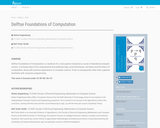
Delftse Foundations of Computation is a textbook for a one quarter introductory course in theoretical computer science. It includes topics from propositional and predicate logic, proof techniques, set theory and the theory of computation, along with practical applications to computer science. It has no prerequisites other than a general familiarity with computer programming.
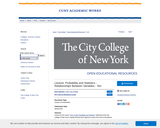
Lecture for the course "CS 217 – Probability and Statistics for Computer Science" delivered at the City College of New York in Spring 2019 by Evan Agovino as part of the Tech-in-Residence Corps program.

For this 3-part project, students will prepare for programming by practicing the problem-solving steps. They will select a problem that they are dealing with at home, at school, or a problem in the community. They will then research and gather data to help them find a step by step plan to solve the problem.
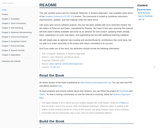
Suppose you want to build a computer network, one that has the potential to grow to global proportions and to support applications as diverse as teleconferencing, video on demand, electronic commerce, distributed computing, and digital libraries. What available technologies would serve as the underlying building blocks, and what kind of software architecture would you design to integrate these building blocks into an effective communication service? Answering this question is the overriding goal of this book—to describe the available building materials and then to show how they can be used to construct a network from the ground up.

6.004 offers an introduction to the engineering of digital systems. Starting with MOS transistors, the course develops a series of building blocks — logic gates, combinational and sequential circuits, finite-state machines, computers and finally complete systems. Both hardware and software mechanisms are explored through a series of design examples.
6.004 is required material for any EECS undergraduate who wants to understand (and ultimately design) digital systems. A good grasp of the material is essential for later courses in digital design, computer architecture and systems. The problem sets and lab exercises are intended to give students "hands-on" experience in designing digital systems; each student completes a gate-level design for a reduced instruction set computer (RISC) processor during the semester.

Introduction to Computer Graphics is a free, on-line textbook covering the fundamentals of computer graphics and computer graphics programming. This book is meant for use as a textbook in a one-semester course that would typically be taken by undergraduate computer science majors in their third or fourth year of college.

This is an introductory course on computational thinking. We use the Julia programming language to approach real-world problems in varied areas, applying data analysis and computational and mathematical modeling. In this class you will learn computer science, software, algorithms, applications, and mathematics as an integrated whole. Topics include image analysis, particle dynamics and ray tracing, epidemic propagation, and climate modeling.
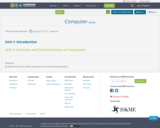
An Electronic Device where raw data is converted into information.

This course introduces abstraction as an important mechanism for problem decomposition and solution formulation in the biomedical domain, and examines computer representation, storage, retrieval, and manipulation of biomedical data. As part of the course, we will briefly examine the effect of programming paradigm choice on problem-solving approaches, and introduce data structures and algorithms. We will also examine knowledge representation schemes for capturing biomedical domain complexity and principles of data modeling for efficient storage and retrieval. The final project involves building a medical information system that encompasses the different concepts taught in the course.
Computer science basics covered in the first part of the course are integral to understanding topics covered in the latter part, and for completing the assigned homework.
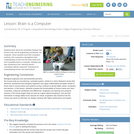
Students learn about the similarities between the human brain and its engineering counterpart, the computer. Since students work with computers routinely, this comparison strengthens their understanding of both how the brain works and how it parallels that of a computer. Students are also introduced to the "stimulus-sensor-coordinator-effector-response" framework for understanding human and robot actions.